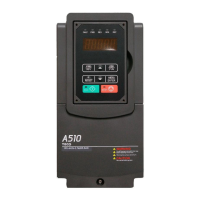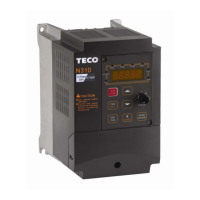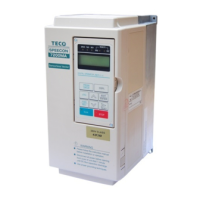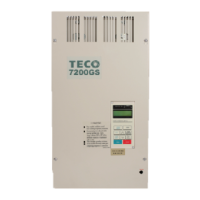3-15
3.3.6 Considerations for peripheral equipment
(
(For detailed information for the above peripheral equipment refer to Chapter 6)
Power
Ensure that the supply voltage is correct.
A molded-case circuit breaker or fused disconnect
must be installed between the AC source and the
inverter
Circuit
Breaker
& RCD
Use a molded-case circuit breaker that conforms to
the rated voltage and current of the inverter.
Do not use the circuit breaker as the run/stop switch
for the inverter.
Residual Current Circuit Breaker(RCD)
Current setting should be 200mA or above and the
operating time at 0.1 second or longer to prevent
malfunctions.
Magnetic
contactor
Normally a magnetic contactor is not needed.
A contactor can be used to perform functions such
as external control and auto restart after power
failure.
Do not use the magnetic contactor as the run/stop
switch for the inverter.
AC reactor for
power quality
improvement
When a 200V/400V inverter with rating below 15KW
is connected to a high capacity power source
(600kVA or above) then an AC reactor can be
connected for power factor improvement and
reducing harmonics.
Input noise
filter
L510 inverter has a built-in filter to Class “A” first
Environment. (CategoryC2)
To satisfy the required EMC regulations for your
specific application you may require an additional
EMC filter.
Inverter
Connect the single phase power to Terminals, L1(L)
& L3(N) and three phase power to Terminals :
(200V : L1(L),L2,L3(N) or 400V : L1,L2,L3)
Warning! Connecting the input terminals T1, T2,
and T3 to AC input power will damage the inverter.
Output terminals T1, T2, and T3 are connected to U,
V, and W terminals of the motor.
To reverse the motor rotation direction just swap
any two wires at terminals T1, T2, and T3.
Ground the Inverter and motor correctly.
Ground Resistance for 200V power<100 Ohms.
Motor
Three-phase induction motor. Voltage drop on motor
due to long cable can be calculated.
Volts drop should be < 10%.
Phase-to-phase voltage drop (V) =
3 ×resistance of wire (Ω/km)×length of line
(m)×current×10
-3

